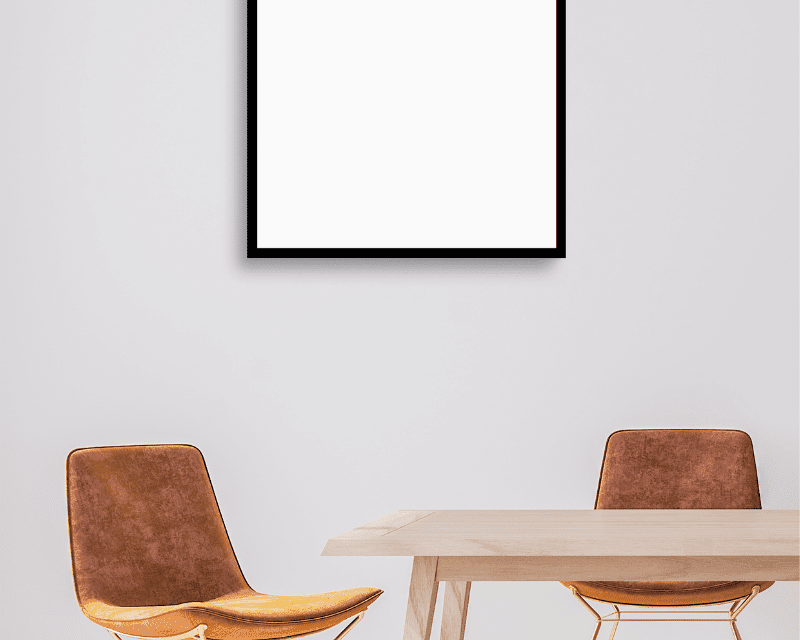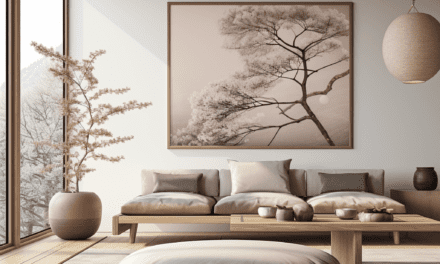A fusion of Japanese minimalism and Scandinavian functionality, Japandi furniture, especially Japandi chairs, are becoming a go-to choice for interior enthusiasts.
I’ll walk you through everything you need to know about Japandi chairs – their origins, craftsmanship, styles, common colors and materials, and tips on choosing the perfect one for your space.
I’ll also steer you towards the best places to shop for them.
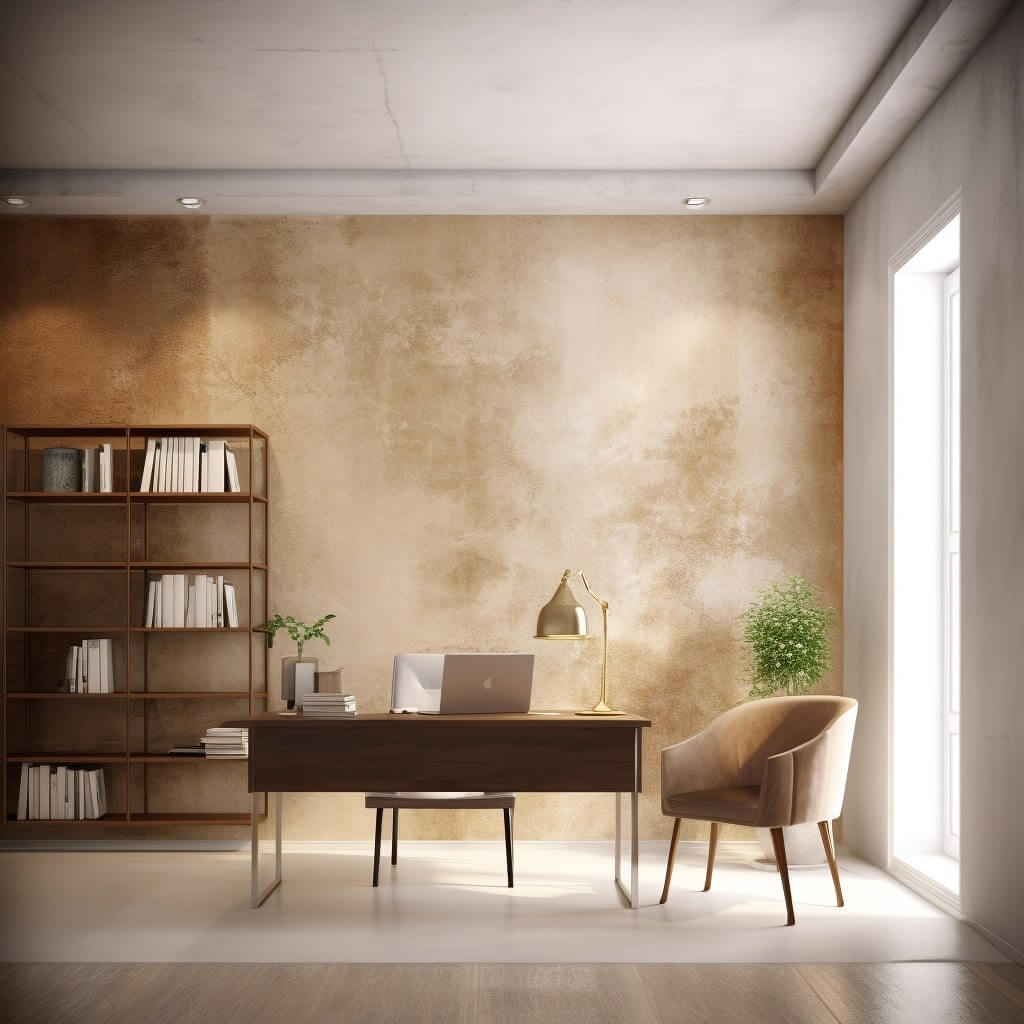
The Japandi Design Aesthetic: An Overview
When it comes to finding the perfect balance in design, few styles capture it as well as Japandi.
A fusion of Japanese and Scandinavian aesthetics, Japandi combines the simplicity and functionality of Scandinavian design with the elegance and minimalism of Japanese Zen philosophy.
Origins of the Japandi Style
The Japandi design movement emerged in the mid-2010s as an innovative blend of two cultures that, despite geographical distance, share a mutual respect for craftsmanship, simplicity, and nature.
Both cultures cherish minimalist designs that value functionality and strive for a harmonious balance in living spaces.
Japan, known for its wabi-sabi design principle that finds beauty in imperfection and impermanence, provides a sense of authenticity and calming serenity to the blend.
On the other hand, Scandinavia, famed for its hygge concept that celebrates comfort, coziness, and well-being, contributes warmth and a homey feel.
The blend of these two cultures in Japandi thus results in an attractive, balanced aesthetic that is both soothing and inviting.
Defining Characteristics of Japandi Design
Japandi design is easily distinguishable by its distinctive features. It harmonizes the use of neutral, calming color palettes, clean lines, and minimal ornamentation.
The design places high importance on functionality and emphasizes natural, sustainable materials like wood, bamboo, and linen.
Every piece of furniture in a Japandi styled room, including chairs, is thoughtfully chosen and placed.
There is a strong focus on craftsmanship and longevity, ensuring that every piece not only serves a practical function but also contributes to the overall aesthetics of the room.
Why Japandi Chairs are Gaining Popularity
In recent years, Japandi chairs have gained significant popularity.
They effortlessly embody the ethos of less is more, combining comfort, functionality, and beautiful design.
These chairs make a statement while seamlessly integrating into the surrounding Japandi decor.
Their appeal lies in their ability to bring a sense of calm and order to a space.
With their simple lines, natural materials, and understated elegance, Japandi chairs add an element of tranquility and harmony that resonates with many in today’s fast-paced, often chaotic world.
Moreover, as people become more environmentally conscious, the sustainable aspect of Japandi design, with its emphasis on natural materials and long-lasting quality, becomes increasingly attractive.
Japandi chairs are therefore not just a design trend, but a reflection of the shifting values and priorities of modern society.
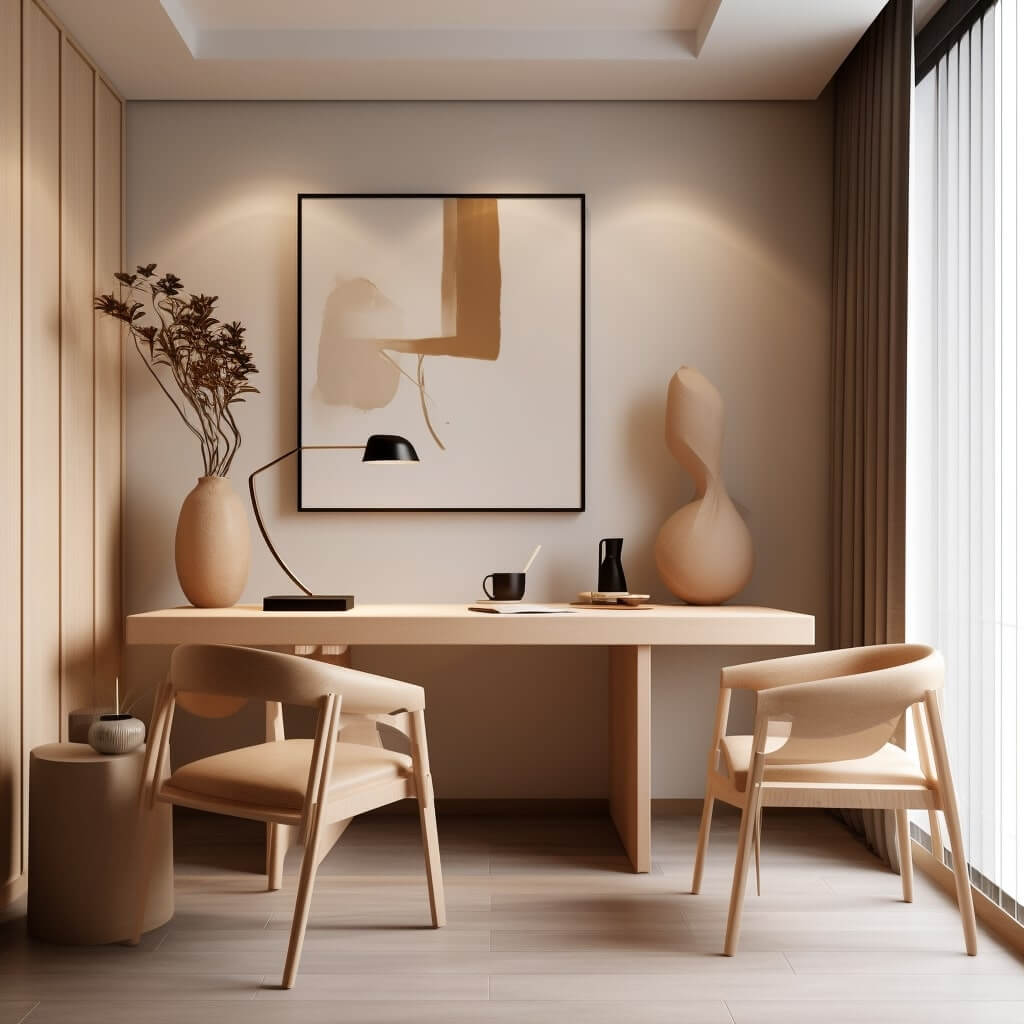
The Art of Japandi Chair Craftsmanship
Just as the style itself merges two distinct cultures, the art of Japandi chair craftsmanship represents a harmonious blend of traditional techniques and modern innovations.
This fusion creates pieces that resonate with simplicity and authenticity while boasting high durability and quality.
Traditional Techniques in Making Japandi Chairs
The craft of making Japandi chairs often relies on traditional techniques sourced from both Japanese and Scandinavian heritage.
Japanese carpentry is renowned for its precision and expertise, often showcased through intricate joinery that eliminates the need for nails or screws. Techniques such as ‘Kumiki,’ a traditional wood joining method, may be employed to create sturdy, reliable structures that embody the spirit of Wabi-Sabi, emphasizing natural imperfections.
Similarly, Scandinavian woodworking methods, which have been refined over centuries, play a critical role.
Scandinavians have a long history of working with wood, a material abundantly available in the region.
Techniques such as bentwood and flat-pack designs testify to the Scandinavian tradition of combining beauty with functionality.
Modern Adaptations and Innovations
While Japandi chair design respects tradition, it isn’t shy about embracing modern adaptations and innovations.
Designers today use technology to push the boundaries of what’s possible with natural materials, creating pieces that are surprisingly innovative while still feeling organic and true to the Japandi aesthetic.
Modern manufacturing techniques can enhance the strength and durability of materials, make production more efficient, and allow for shapes and forms that might not be possible with traditional methods.
Computer-aided design (CAD) and 3D printing are just a couple of examples of how contemporary technology has influenced Japandi chair design and production.
Quality and Sustainability in Japandi Furniture
One of the key aspects that sets Japandi design apart is its emphasis on quality and sustainability.
Every Japandi chair isn’t just a piece of furniture, but a work of art that reflects a deep respect for the materials used.
Furniture pieces are built to last, not just in terms of physical durability but also in design longevity.
Rather than following fleeting trends, Japandi furniture is timeless, designed to be cherished for years and even generations.
In a world growing increasingly aware of our environmental impact, the Japandi focus on sustainability is more pertinent than ever.
By choosing natural, ethically-sourced materials and designing for longevity, Japandi craftsmanship offers a responsible choice for those of us who wish to lessen our footprint while not compromising on style or quality.
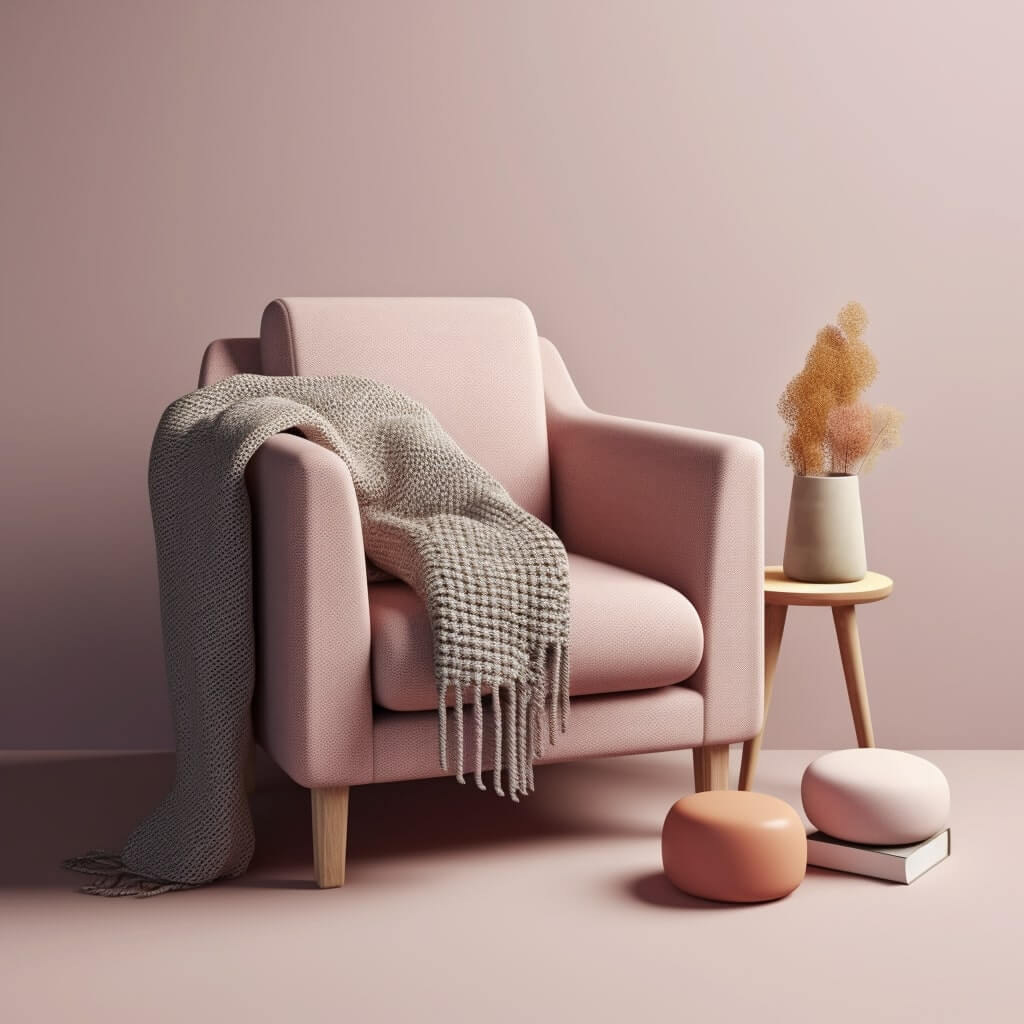
Understanding Japandi Chair Styles
While the Japandi aesthetic maintains a consistent theme of balance and minimalism, there is enough room for variation within these parameters.
Let’s explore some of the most popular Japandi chair styles: Minimalist, Industrial, and Bohemian.
Minimalist Japandi Chairs
Minimalist Japandi chairs are, perhaps, the truest representation of the design philosophy. They embody simplicity and functionality at its best.
These chairs often feature clean, uncomplicated lines, and a muted, neutral color palette.
The lack of ornate details or unnecessary embellishments does not compromise their aesthetic appeal but enhances it.
The use of natural materials like wood, bamboo, or linen is prevalent in minimalist Japandi chairs, emphasizing an organic feel.
The focus is on creating pieces that not only look good but feel good to use and effortlessly blend into any space they occupy.
If you’re shopping for the kitchen consider a sleek Japandi bar stool instead – they’re more minimalist and tie in with the Japandi look.
And for tight spaces like entryways in the Japandi style, a minimalist, simple chair works best.
Industrial Japandi Chairs
Japandi style also ventures into the industrial realm, resulting in a fusion that’s contemporary yet rooted in classic design principles.
Industrial Japandi chairs often incorporate elements such as metal frames or accents, but these harsher materials are balanced by the inclusion of natural ones, such as wooden seats or backrests.
The color palette remains subdued, with darker shades often used to underscore the industrial feel.
The result is a chair that feels modern and edgy, yet still maintains the sense of calm and harmony associated with Japandi design.
Bohemian Japandi Chairs
Bohemian Japandi chairs are for those who wish to add a touch of whimsy to the typically calm Japandi waters.
They maintain the fundamental principles of simplicity, functionality, and a connection to nature, but aren’t afraid to play with patterns, textures, and a slightly more adventurous color palette.
A Bohemian Japandi chair might incorporate rattan or wicker, plush cushions in earthy tones, or a splash of color or pattern in the upholstery.
The design maintains a careful balance, ensuring that the piece is eye-catching without being overbearing, and that it brings warmth and personality to a space without disrupting the tranquility.
These are just a few of the many ways the Japandi style can be interpreted and embodied in chair design.
Each style, while unique, maintains a common thread: a thoughtful blend of Japanese and Scandinavian design principles that prioritize harmony, functionality, and a deep respect for natural materials.
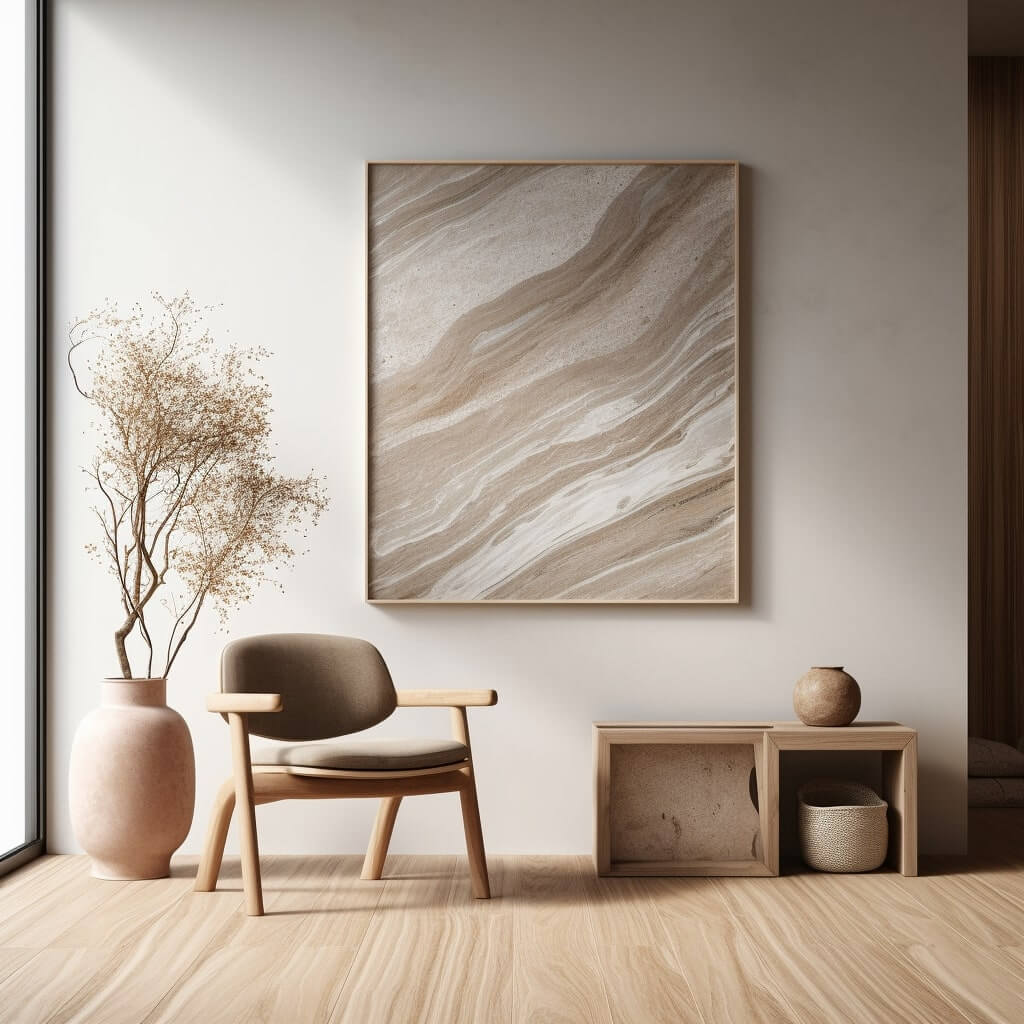
Colors and Materials For Japandi Chairs
One of the key aspects defining the Japandi aesthetic is the careful selection of colors and materials.
The combination of these elements in Japandi design creates a harmonious balance, mirroring the natural world and promoting a sense of tranquility.
Color Palettes in Japandi Design
Japandi color palettes are predominantly neutral and calming.
Think of muted earth tones and pastels: soft greys, gentle browns, creams, whites, and blacks are used alongside hints of natural green and even soft pinks or blues.
The goal is to create a soothing atmosphere that inspires peace and relaxation.
However, unlike some minimalistic designs, Japandi isn’t afraid of adding deeper tones for contrast and depth.
Splashes of darker colors such as navy, charcoal or deep forest green can be used to add a dramatic effect and create an anchor in the overall design.
Natural Materials in Japandi Chairs
Material selection in Japandi design reflects the style’s reverence for the natural world.
Wood is the most commonly used material, particularly lighter species such as oak, ash, or pine, although darker woods like walnut or mahogany can also find their place.
Bamboo, rattan, and wicker are also popular, adding texture and visual interest to the pieces.
For upholstery, natural fabrics like linen or cotton are preferred.
These materials not only enhance the aesthetic appeal of the chairs but also contribute to their comfort and functionality.
Mix and Match: How to Incorporate Different Materials
While wood may be the star, Japandi design appreciates the beauty of mixed materials.
Metal accents can be used in chair legs or armrests, adding a modern edge to the overall design.
Glass or ceramic elements can also be incorporated, perhaps in decorative details or accompanying decor items.
The key to successful material blending in Japandi style is balance.
Each material should complement the others, and no single material should overpower the rest.
The result should be a harmonious mix that feels organic and layered, reflecting the spirit of simplicity and tranquility inherent in Japandi design.
How to Choose a Japandi Chair
Choosing the perfect Japandi chair involves more than simply selecting a piece that catches your eye.
It’s about understanding your space, identifying your personal style, and considering the chair’s comfort and functionality.
Assessing Your Space
The first step in choosing your Japandi chair is to thoroughly assess your space.
Note the size of the room, its layout, and the existing furniture and decor pieces.
Consider the color scheme and overall style.
Japandi design is all about balance, so your new chair should harmonize with its surroundings rather than stand out.
For instance, in a space with darker tones, you might opt for a chair with a lighter finish to bring in some contrast.
Also, take note of the practicalities.
If your space is small, consider a chair with a slim profile that won’t overpower the room.
If you have a large, open space, you have the freedom to go for a more substantial piece.
Identifying Your Personal Style
While it’s important to consider the style of your room, your own personal style should be a significant influence in your choice.
Are you drawn more to the minimalist Japandi style, or do you prefer the eclectic appeal of the bohemian Japandi look?
Remember that while Japandi is a distinct style, it’s also flexible.
There’s room to play and inject your personality into your choice of chair.
Considerations for Comfort and Functionality
Last but certainly not least, consider the comfort and functionality of the chair. Japandi design is deeply rooted in practicality.
The chair should be comfortable to sit in and fit its intended use, whether that’s a dining chair, a reading chair, or a decorative accent chair.
Consider factors like the height of the chair, the presence (or absence) of armrests, the material of the seat, and so on.
Where to Buy Japandi Chairs
Whether you’re a fan of online shopping or prefer to make your purchases in person, there are plenty of options when it comes to buying Japandi chairs.
Let’s take a look at some of the best routes to explore.
Online Retailers for Japandi Chairs
Online shopping offers convenience and a broad range of choices.
Websites like Wayfair, Etsy, and Overstock have an impressive collection of Japandi chairs, with options to suit every budget.
More specialized online retailers like Nordic Nest or Rove Concepts focus on Scandinavian and mid-century modern designs, many of which fit the Japandi aesthetic.
Physical Stores Offering Japandi Furniture
For those who prefer to see and feel the furniture before making a purchase, physical stores are the way to go.
Furniture stores like IKEA, West Elm, or local boutique stores often carry pieces that align with the Japandi style.
These stores provide the opportunity to test the comfort of the chairs and view them in different lighting conditions.
You might also find local auction houses selling some golden retro finds and antiques to get more of a vintage Jpandi look.
Custom-Made Japandi Chairs: Pros and Cons
If you’re after something unique, consider a custom-made Japandi chair.
Working with a skilled craftsman, you can have a chair designed to your exact specifications.
The major advantage is the uniqueness and personal touch, but the process is often more expensive and time-consuming than buying a ready-made piece.
Each buying option has its benefits.
Consider your personal preferences, budget, and timeline when deciding where to purchase your Japandi chair.
FAQs
What colors are Japandi chairs?
Japandi chairs feature neutral and earth tones like greys, browns, blacks, and whites, with occasional splashes of natural greens, soft pinks, or blues for a soothing, harmonious look.
What material are Japandi chairs?
Japandi chairs are commonly made from natural materials, especially wood types like oak, ash, and pine. Bamboo, rattan, and wicker are also popular. Upholstery often uses natural fabrics like linen or cotton.
What to look for in a Japandi office chair?
For a Japandi office chair, prioritize ergonomic design for comfort during long work hours. It should blend simplicity and functionality with materials like wood or metal, and a neutral color palette.
What to look for in a Japandi lounge chair?
A Japandi lounge chair should offer comfort and a calming aesthetic. Look for natural materials, minimalist design, and a form that encourages relaxation. It may have softer, padded upholstery for added comfort.
What to look for in a Japandi dining chair?
Japandi dining chairs should balance style and functionality. They should be comfortable, durable, and complement your dining table. A simple design, neutral colors, and natural materials are key characteristics.
What to look for in a Japandi accent chair?
A Japandi accent chair should stand out but maintain the overall design harmony. Look for unique shapes or textures, a blend of materials, and possibly a dash of color while still adhering to the minimalist aesthetic.
How much should a Japandi chair cost?
The cost of a Japandi chair can vary widely depending on the materials, craftsmanship, and retailer, ranging from under $100 for a simple design to over $1000 for high-end or custom pieces.







